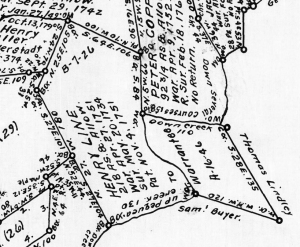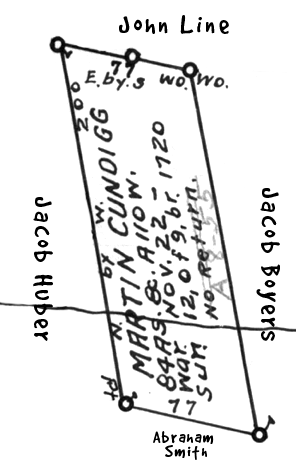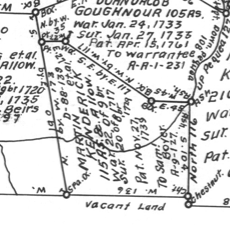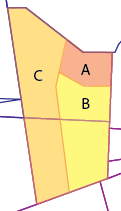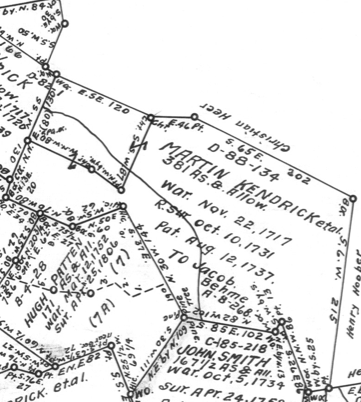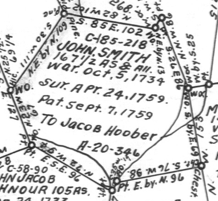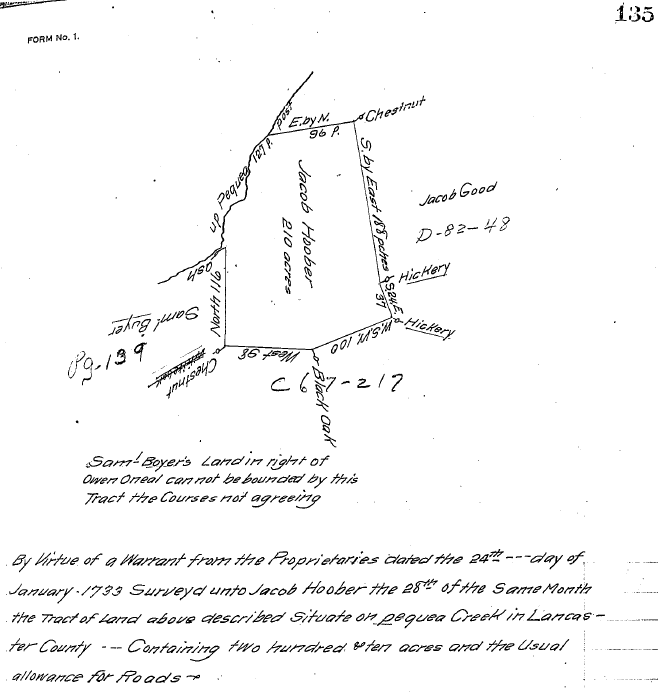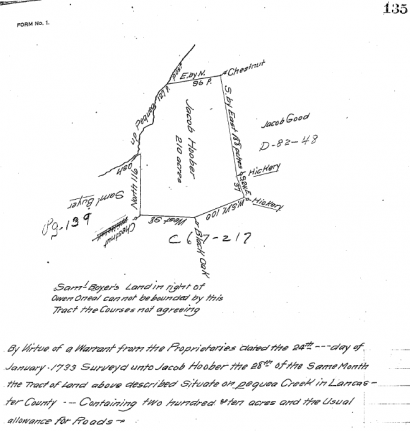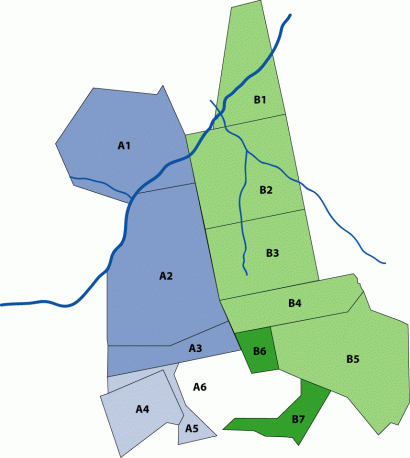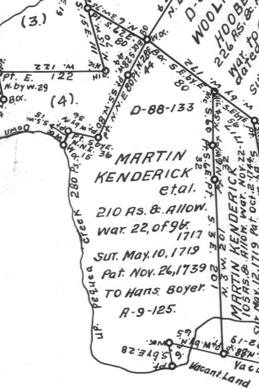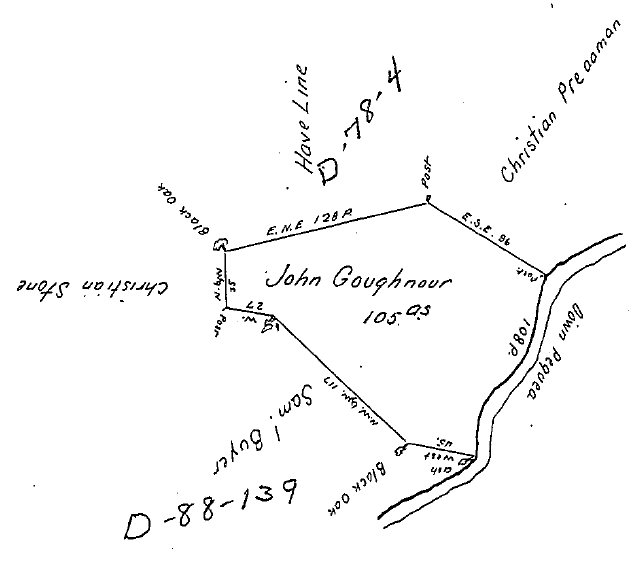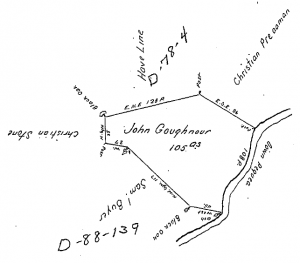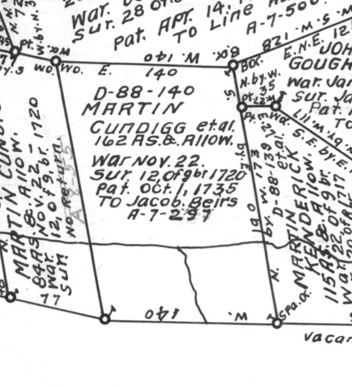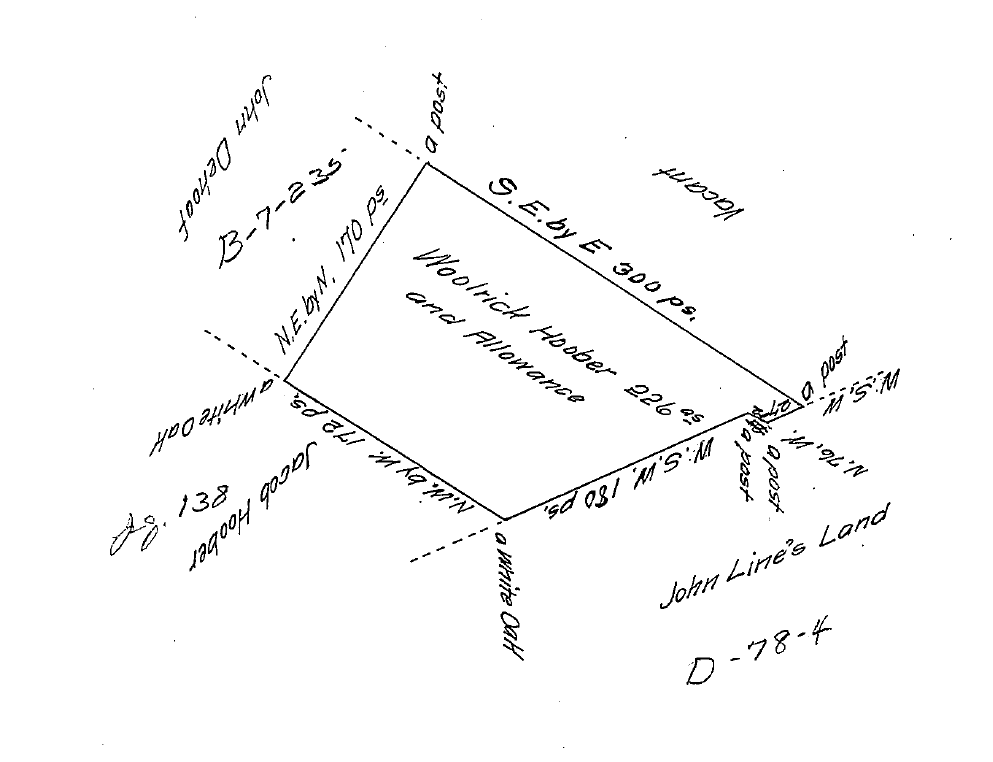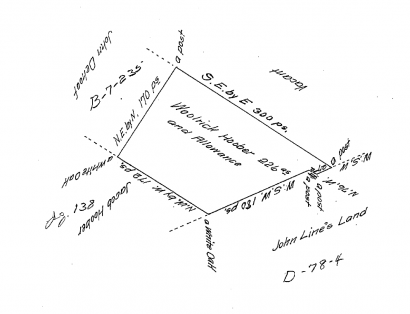Henry Line’s Conestoga Tract
On 20 May 1734, John Taylor surveyed 218 acres on Pequea Creek in Conestoga Township for Thomas Lindley, based on a warrant dated 21 January 1733.1 Lindley must have abandoned or sold the rights to this tract, because Henry Line warranted it on 27 April 1751 and patented it 4 November 1751.2
Henry and Barbara (Boyer)3 Line sold 20 acres from this tract to Christian Shenk on 25 November 1759, along with the saw mill, boring mill, and a grist mill erected on the land.4 Several years later, Henry and Barbara sold 150 acres from this tract to Solomon Kaufman on 9 February 1762.5
Henry died sometime prior to 5 June 1764.6 On 30 October 1765, John Line and his wife Elizabeth released their share of the estate to his brothers Christian and Samuel.7 Christian released his third share of the estate to his brother Samuel four years later on 4 February 1769.8 Samuel Line and Barbara Line, Henry’s widow, sold the residue of this tract along with other land in Martic Township to Ulrich Huber.9
Solomon Kaufman and his wife Mary sold the 150 acres they’d purchased from Henry Line in 1762 to Christian Shenk on 8 April 1774.10 Christian Shenk, in turn, sold his two tracts—one of 20 acres and another of 150 acres—to Christian Shenk Jr. on 5 November 1795.11
This is the twelfth entry for my Along the Pequea series. These posts trace land transactions for early Lancaster County settlers from the first land owner—the warrantee—through subsequent transfers up to 1800, using deeds, other land records, and estate records, as available.

